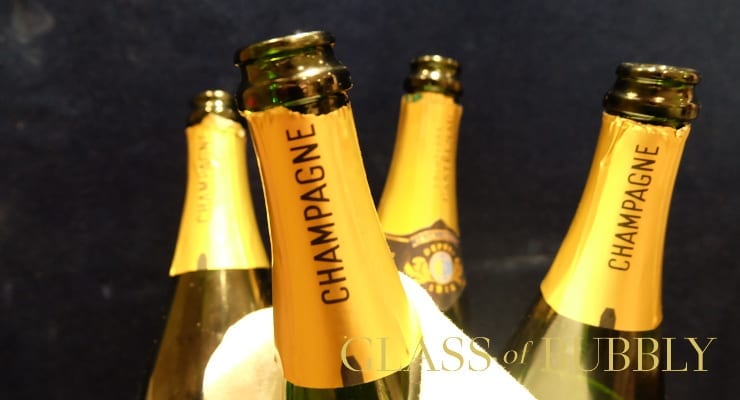How to Easily Identify Good Champagne
12th September 2016

I am sure that many will say that all Champagne is good. Who can ever refuse a glass of bubbly and who would dare say that such a prestigious wine could ever be bad, but just like most things in life, from clothing to cars, from holidays to watches, there are many types and many qualities. Even though Champagne is uniquely made in a small dedicated region of France, there are 1,000’s of Champagne labels and 1,000’s of different tastes to explore from bruts, Blanc de Blancs, vintages and good old rosé. So with so much choice, how do we identify what a good Champagne is?
Firstly, I would say that you need to decide why you are purchasing your Champagne, are you looking to pair it with food, are you using it for cocktails, are you just looking for some party fizz or are you looking for something special for that special occasion? What will also decide things for you will be your budgets, of course we all know that the bigger the budget you have then the more choice you will be confronted with, so you must decide what you want to spend first as this will help you to identify the best Champagne in your price range though just because something is expensive, it does not necessarily mean it will be better tasting over something cheaper.
In no particular order, some obvious and some less so, combine them all or select just one or two, but here are some tips to help you pick out the best Champagne for you needs:
Brand. By choosing a brand that is very well known, a ‘grand marque’, will guarantee you good standards in most occasions as they have high standards to stick to and a long media facing high reputation to keep. Names such as Ruinart, Charles Heidsieck, Bollinger, Dom Pérignon, Krug and Perrier-Jouët among others will generally be available at most supermarkets and wine merchant chains. These labels will be good quality, will vary slightly in price and if you wished to dig deeper you could explore their more bespoke ranges such as vintages and scale up the quality of wine you will get for your money.
Where you buy from. This could have a big factor on spotting the best bubbly for your buck as some wine sellers / wine merchants will nowadays provide reviews and the likes of star ratings from previous purchasers, these are great to read through to give you an idea if the purchase you are wanting to make will in fact turn out to be a good one especially for those purchasing online. Face to face with an experienced wine seller, for Champagne I do strongly recommend speaking to those supplying grower Champagne ranges, can really help you to get a fine bottle of fizz as they will have extensive knowledge of their wines and be able to select the perfect one for your requirements with fine details such as to which is the better to go with the foods you are looking pair it with. Grower vs Grand Marques is a fantastic subject to explore!
Vintage or non-vintage? What a vintage really means is that all the grapes used to make the Champagne were from the same year rather than a mixture years as is the case for many other non-vintage. The wine maker will have decided that the harvest of grapes of that year were good enough to produce a more superior wine, you will know a Champagne is a vintage as it will carry a year on the bottle which non-vintage cannot do. The wine of a vintage will usually have far more character and a unique taste that if aged will increase in complexity and quality. Vintage Champagne will generally be more expensive than non-vintage and prices will increase the older the vintage.
Remember to make sure it is Champagne. Believe it or not, many people still mix up their bubbly and will opt for a sparkling wine thinking it is a Champagne and instead pick up a bottle of Prosecco or Cava instead. There is no ‘real Champagne’, there is no ‘French Champagne’ and there is no ‘proper Champagne’ as Champagne is Champagne… In other words, as I mentioned previously, Champagne is only made in one dedicated location in the world, in France and from a select few wine houses (approx. 4,000). When you are choosing your bubbly, just make sure that it says Champagne on the bottle, remembering that the only other legal location in the world to call itself Champagne (a legal loophole) is from California and it is not ‘Champagne’ as such, just allowed to call itself that. To confuse things further there is a town in Switzerland called Champagne that produces wines, but anyway… Make sure that you choose a bottle of actual Champagne and not make that common mistake of misidentifying your bubbly.
![]()
Christopher Walkey
Co-founder of Glass of Bubbly. Journalist and author focused on Champagne & Sparkling Wines and pairing them with foods.
